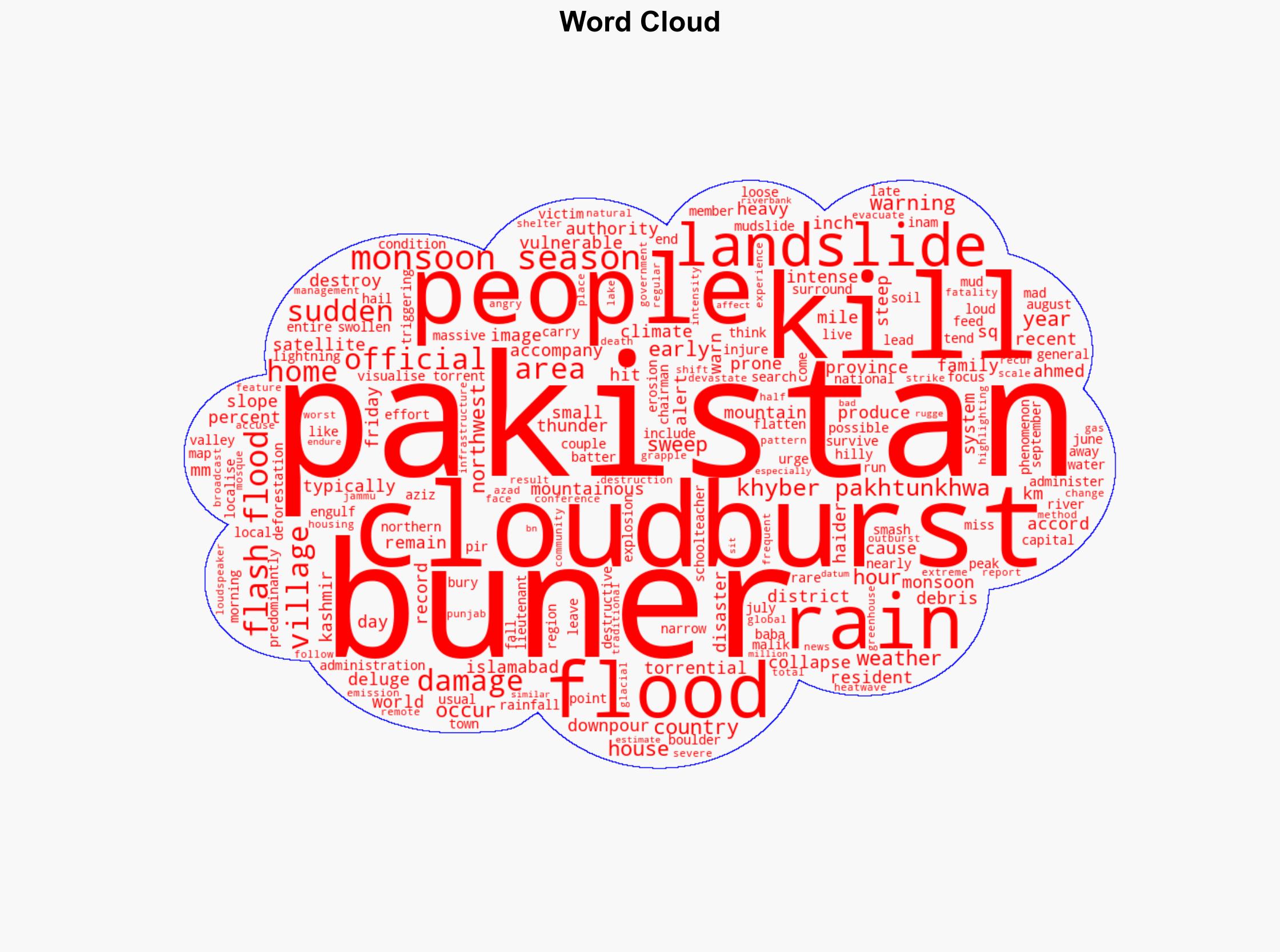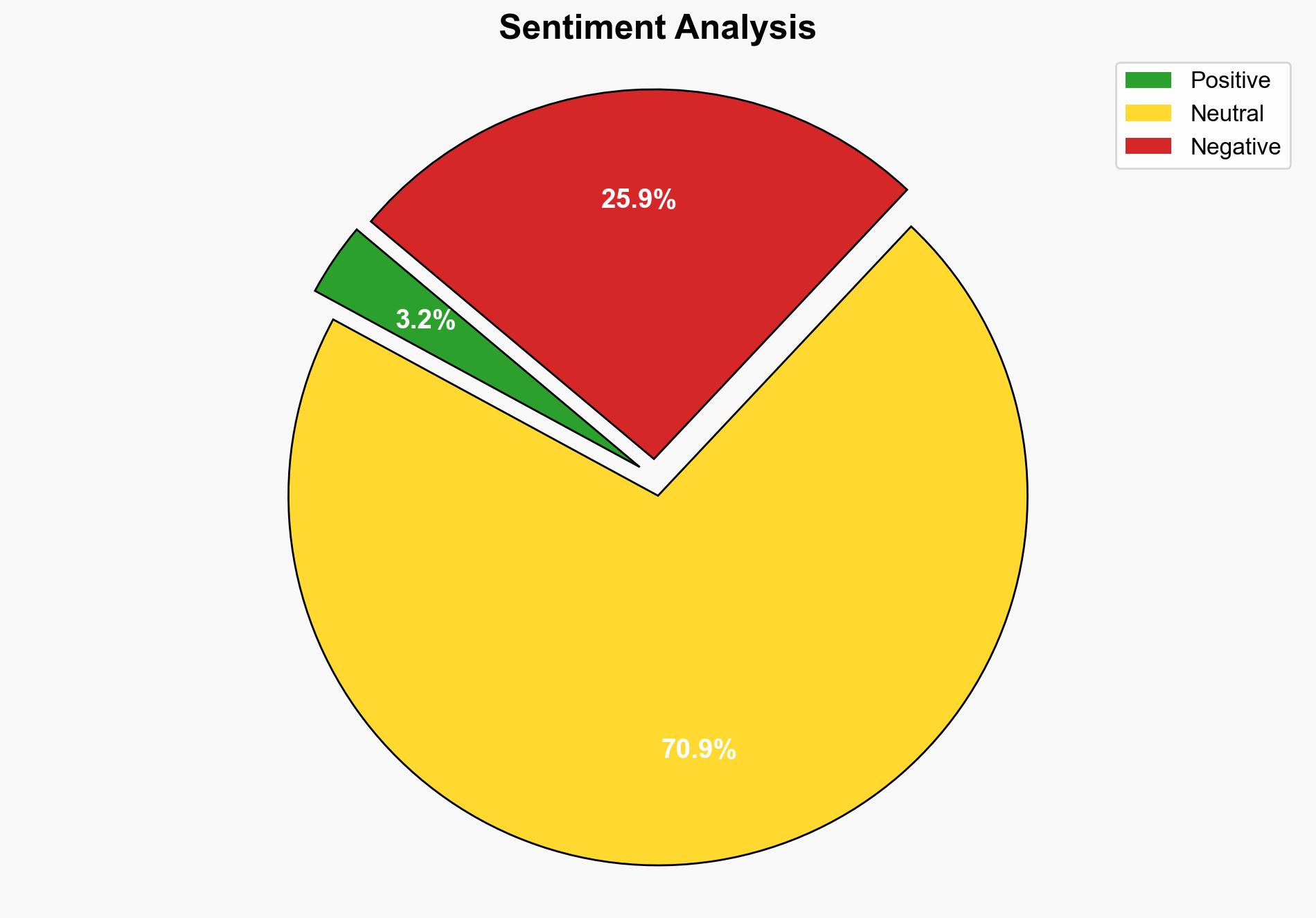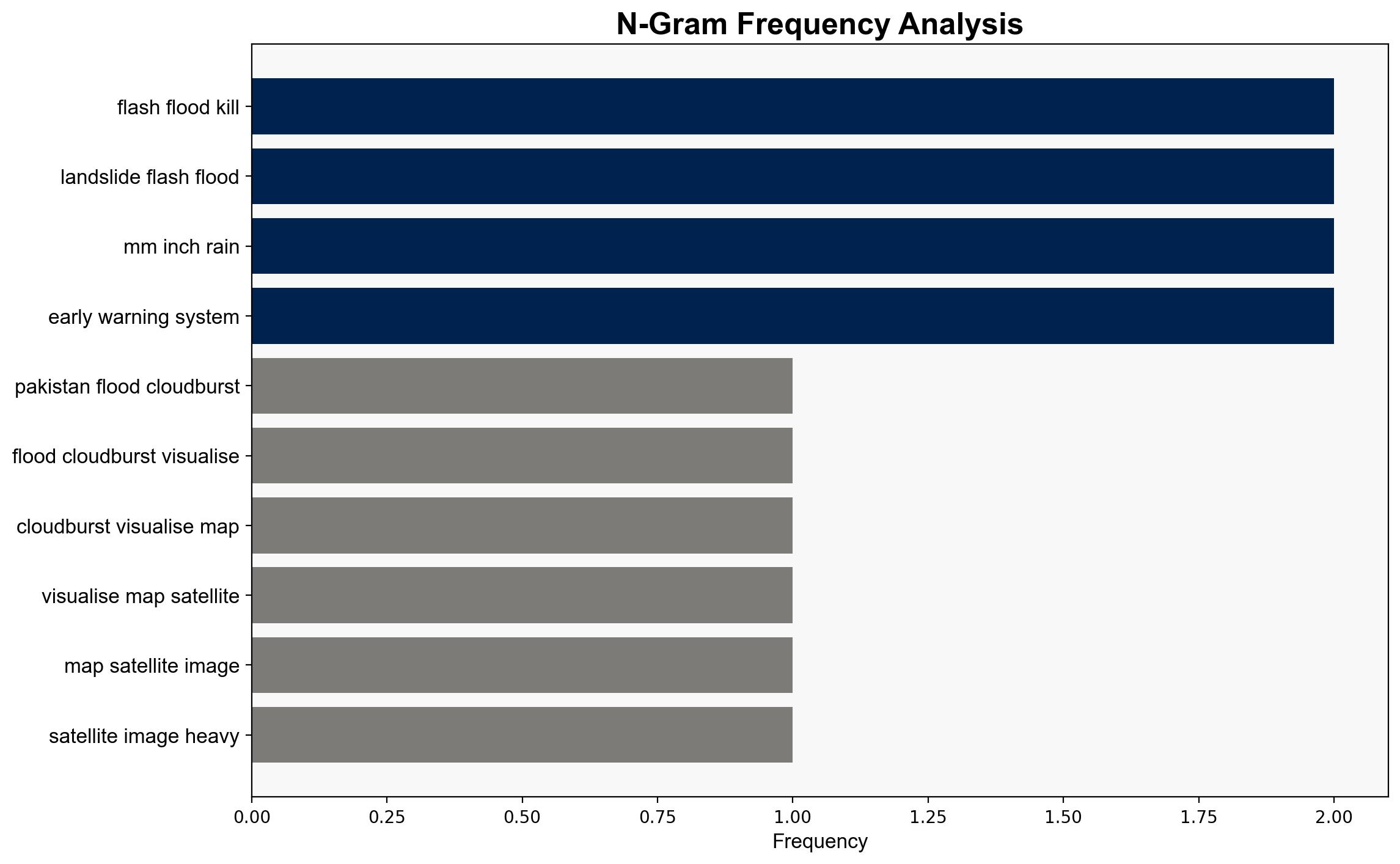Pakistan floods and cloudbursts visualised in maps and satellite images – Al Jazeera English
Published on: 2025-08-19
Intelligence Report: Pakistan floods and cloudbursts visualised in maps and satellite images – Al Jazeera English
1. BLUF (Bottom Line Up Front)
The most supported hypothesis is that the increased frequency and intensity of floods and cloudbursts in Pakistan are primarily driven by climate change, exacerbated by local environmental degradation. Confidence level: High. Recommended action includes enhancing early warning systems and implementing sustainable land management practices to mitigate future risks.
2. Competing Hypotheses
1. **Hypothesis A**: The recent floods and cloudbursts in Pakistan are primarily a result of climate change, which has altered weather patterns, increasing the frequency and intensity of monsoon rains.
2. **Hypothesis B**: The floods and cloudbursts are primarily due to local environmental factors such as deforestation and poor land management, which have increased the region’s vulnerability to natural disasters.
Using the Analysis of Competing Hypotheses (ACH) 2.0, Hypothesis A is better supported by the data, given the broader context of global climate change and its documented impact on weather patterns in South Asia. Hypothesis B, while valid, is more of a contributing factor rather than the primary cause.
3. Key Assumptions and Red Flags
– **Assumptions**: It is assumed that climate change is the primary driver of increased monsoon intensity. Another assumption is that local environmental degradation significantly exacerbates the impact of these natural events.
– **Red Flags**: Lack of comprehensive local climate data could lead to over-reliance on global climate models. Potential bias in attributing all weather anomalies to climate change without considering local factors.
– **Missing Data**: Detailed historical data on deforestation rates and land management practices in affected areas.
4. Implications and Strategic Risks
The increased frequency of extreme weather events poses significant risks to Pakistan’s infrastructure, economy, and population. The potential for cascading threats includes displacement of communities, increased poverty, and strain on government resources. Geopolitically, this could lead to increased regional instability if neighboring countries face similar challenges.
5. Recommendations and Outlook
- Enhance early warning systems and communication strategies, particularly in remote areas.
- Implement sustainable land management and reforestation programs to reduce vulnerability to landslides and floods.
- Scenario-based projections:
- Best Case: Successful implementation of mitigation strategies reduces disaster impact.
- Worst Case: Continued environmental degradation and climate change lead to more severe and frequent disasters.
- Most Likely: Incremental improvements in disaster response and management, with ongoing challenges due to climate change.
6. Key Individuals and Entities
– Aziz Ahmed, a schoolteacher in Buner, highlighted the impact of the recent cloudburst.
– Lieutenant General Inam Haider Malik, Chairman of the National Disaster Management Authority, provided insights into the scale of the disaster.
7. Thematic Tags
national security threats, climate change, disaster management, regional focus





